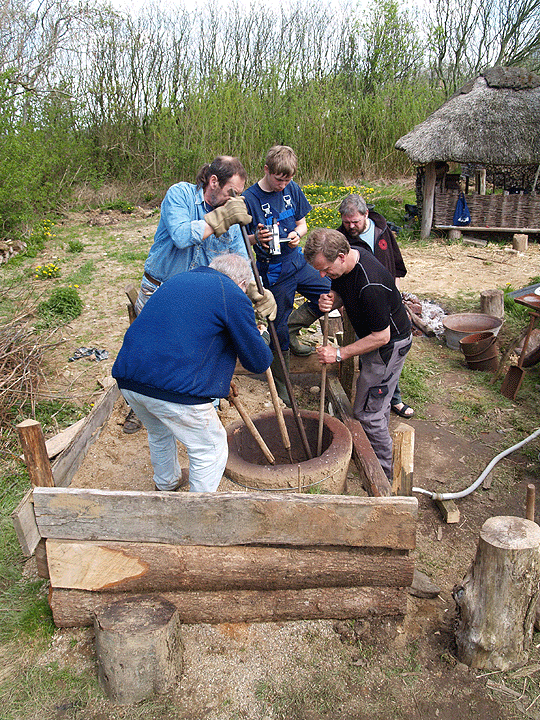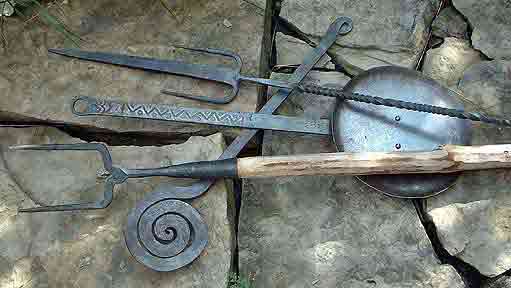(or yet another piece on 'Where Ideas Come From')
Again this year, I will be taking part in the Styll 2 (Style Squared) gallery show.
Styll is a artisan gallery shop in Elora Ontario, in a wonderful stone mid 1800's building. It is located right on the river, at the bridge corner.
 |
| Styll 2 - 2010 version |
Styll 2 is a concept exhibit and sale combining the work of many artists. The individual pieces are all wall hung, and must be 12 x 12 inches square. The selling price for each can be no more than $250. I had created two panels for last year's exhibit (one seen in the lower left above).
I often get asked - 'Where do ideas come from?'
Truth is - all over. A hint for new artists : Keep a blank book and add
anything that sparks your interest. Could be magazine articles, news photos, post cards, written notes - even drawings of your own. The point is to record your ideas, and help you by the recording process to enter these into your memory.
Eventually things will start to leak back out of your brain via your fingers.
I had commented here on the
two pieces from last year : 'Scales' and 'Layered Stone'
Again, one of the new pieces for 2011 is based on an image cut from
Discover (a general science magazine).
My point of inspiration is this photograph, an aerial shot of a mine's tailing pond. Flows of sludge filled water had created a layered pattern of circular swirls of grey.
 |
| 'Toxic' - Fall 2011 |
|
To create 'Toxic' I had forged separate pieces of mild steel flat stock, working with a number of widths and thicknesses. The central pieces were set on edge, ending in spirals. The outer ones forged out to points and curved back on themselves at the center. Some of these shapes are flattened, some were allowed to retain the naturally occurring 3-D form. These were then nestled together and tack welded on the reverse side.
The forge work was laid on to a piece of mirror polished stainless steel. This had been heated with a torch in lines that echo the main contours of the forged elements. This process created a surface patina that ranges from a dull light grey through the colours of tempering - an 'oil slick' effect. Also the heating process distorted the stainless sheet, which now ripples off the wall surface. The net effect is as a distorted mirror. The completed piece has a depth of about 1 1/2 inches.
This piece will be at the top end of the pricing - $250. I do find it quite difficult to create even small objects which both have artistic flair and also are not overly complex / time intensive (read expensive).
There will be two more pieces to follow over the next week - I hope to profile these here as well...
Styll
Gallery
We are open 7 days a week,
10am
- 6pm
Friday nights, open until 8pm











